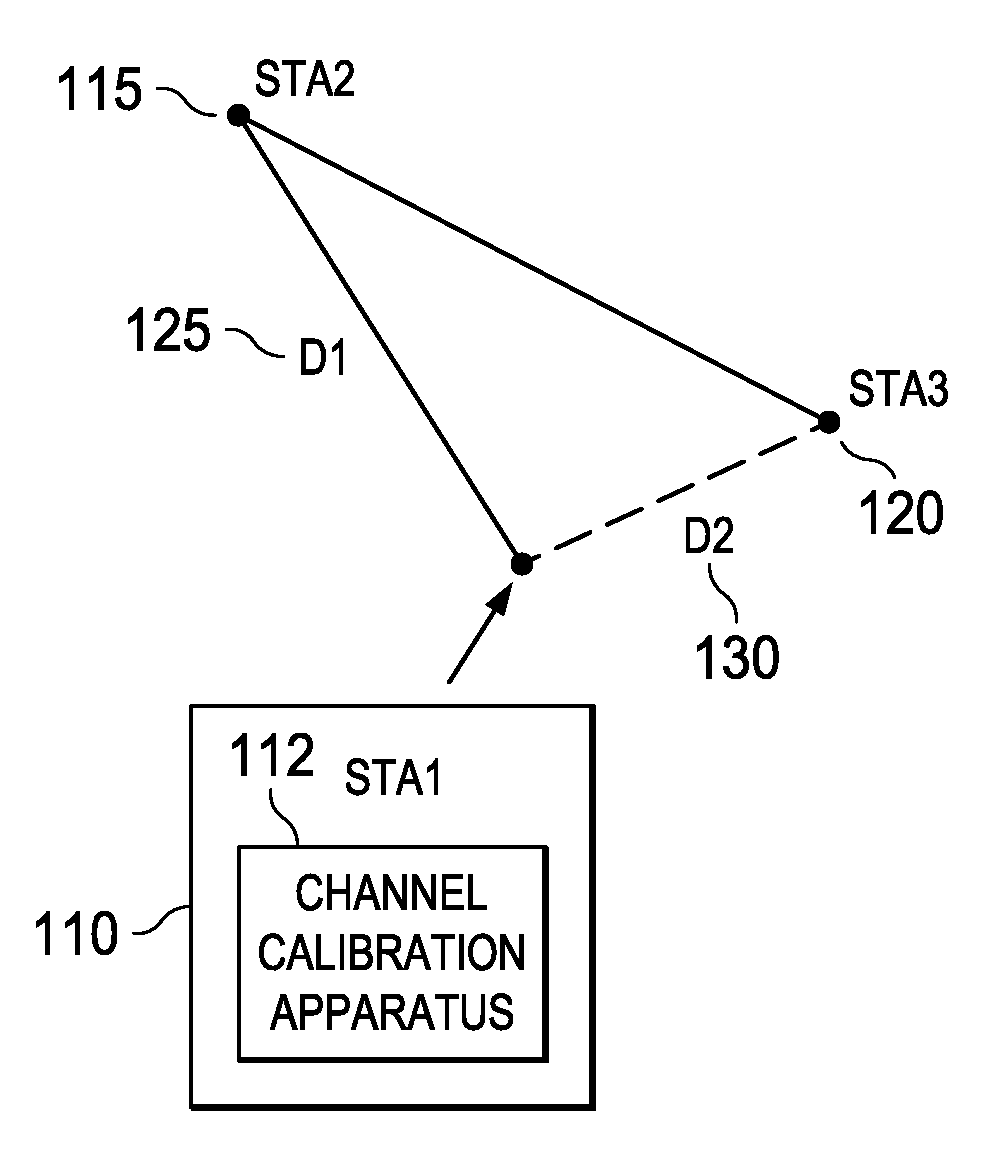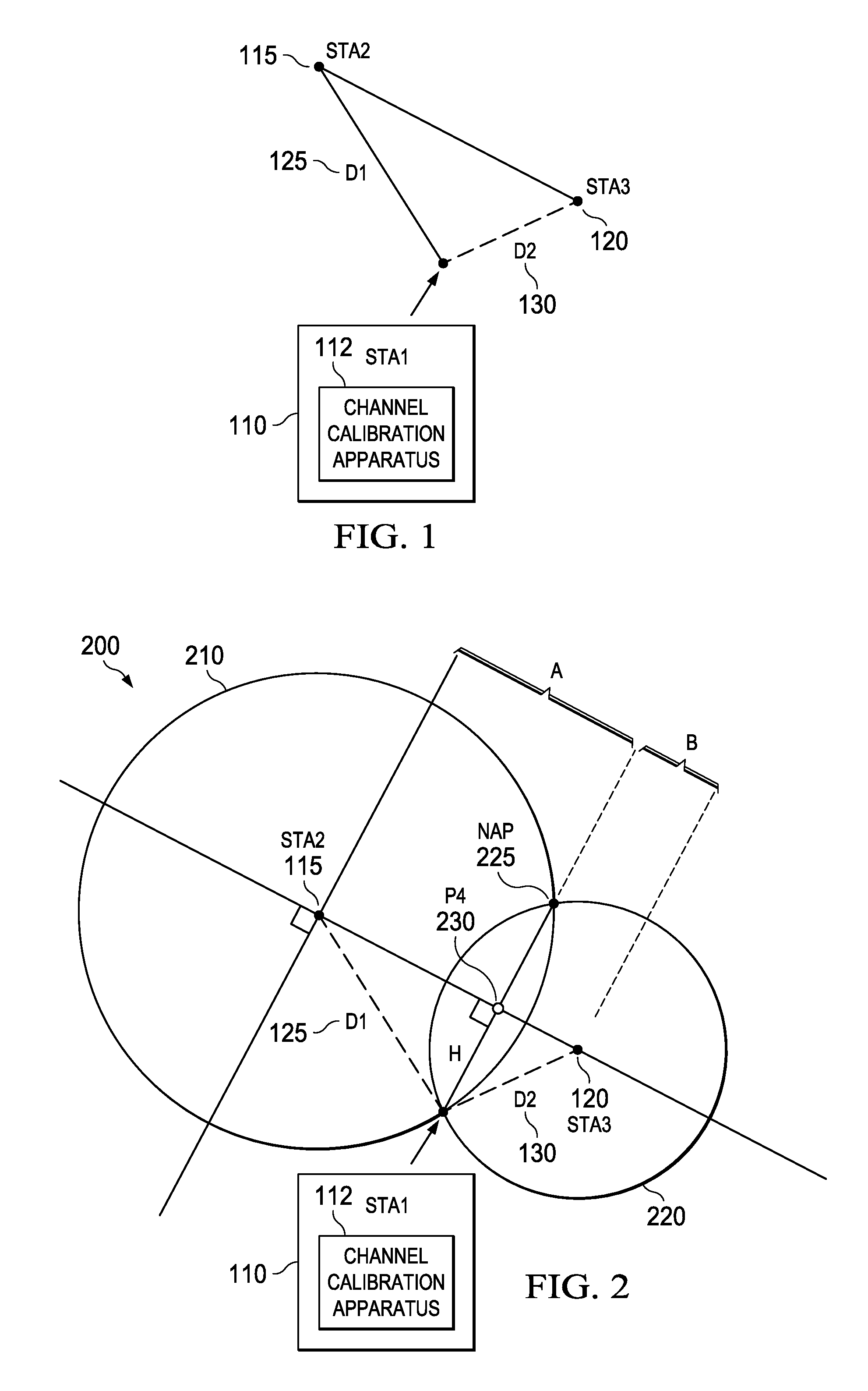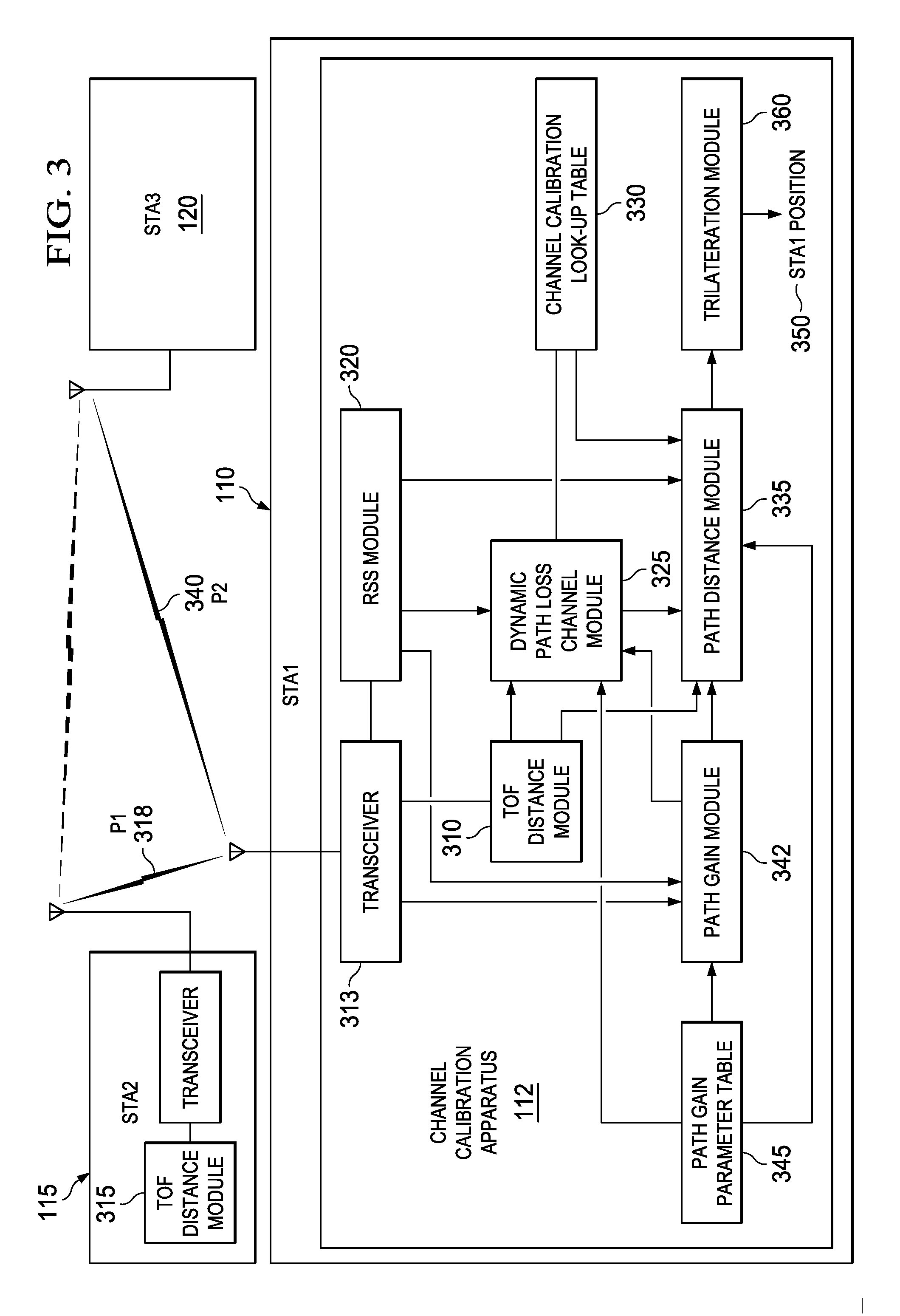Dynamic channel estimation apparatus, systems and methods
a technology of dynamic channel and estimation apparatus, applied in the field of apparatus, systems and methods associated with wireless communication technology, can solve problems such as the inability to measure distance and other problems
- Summary
- Abstract
- Description
- Claims
- Application Information
AI Technical Summary
Benefits of technology
Problems solved by technology
Method used
Image
Examples
Embodiment Construction
[0017]FIG. 1 is a system diagram of a wireless station (e.g., the first wireless station STA1110) incorporating a wireless channel calibration apparatus 112 according to various example embodiments of the invention. The STA1110 is positioned relative to two additional wireless stations (e.g., the second wireless station STA2115 and the third wireless station STA3120). STA2115 and STA3120 may, but need not be, APs. In some environments, particularly indoor environments, a user of STA1110 may wish to determine his / her coordinate location in the absence of a GPS or other navigation signal.
[0018]Some wireless geometries may lend themselves to determining the position of STA1110 if the position coordinates of STA2115 and the STA3120 are known. STA1110 may acquire STA2115 and STA3120 position coordinates through various techniques. Each AP in a multi-AP network may, for example, store a table of position coordinates corresponding to the locations of other APs in the network. The table of ...
PUM
 Login to View More
Login to View More Abstract
Description
Claims
Application Information
 Login to View More
Login to View More - R&D
- Intellectual Property
- Life Sciences
- Materials
- Tech Scout
- Unparalleled Data Quality
- Higher Quality Content
- 60% Fewer Hallucinations
Browse by: Latest US Patents, China's latest patents, Technical Efficacy Thesaurus, Application Domain, Technology Topic, Popular Technical Reports.
© 2025 PatSnap. All rights reserved.Legal|Privacy policy|Modern Slavery Act Transparency Statement|Sitemap|About US| Contact US: help@patsnap.com



